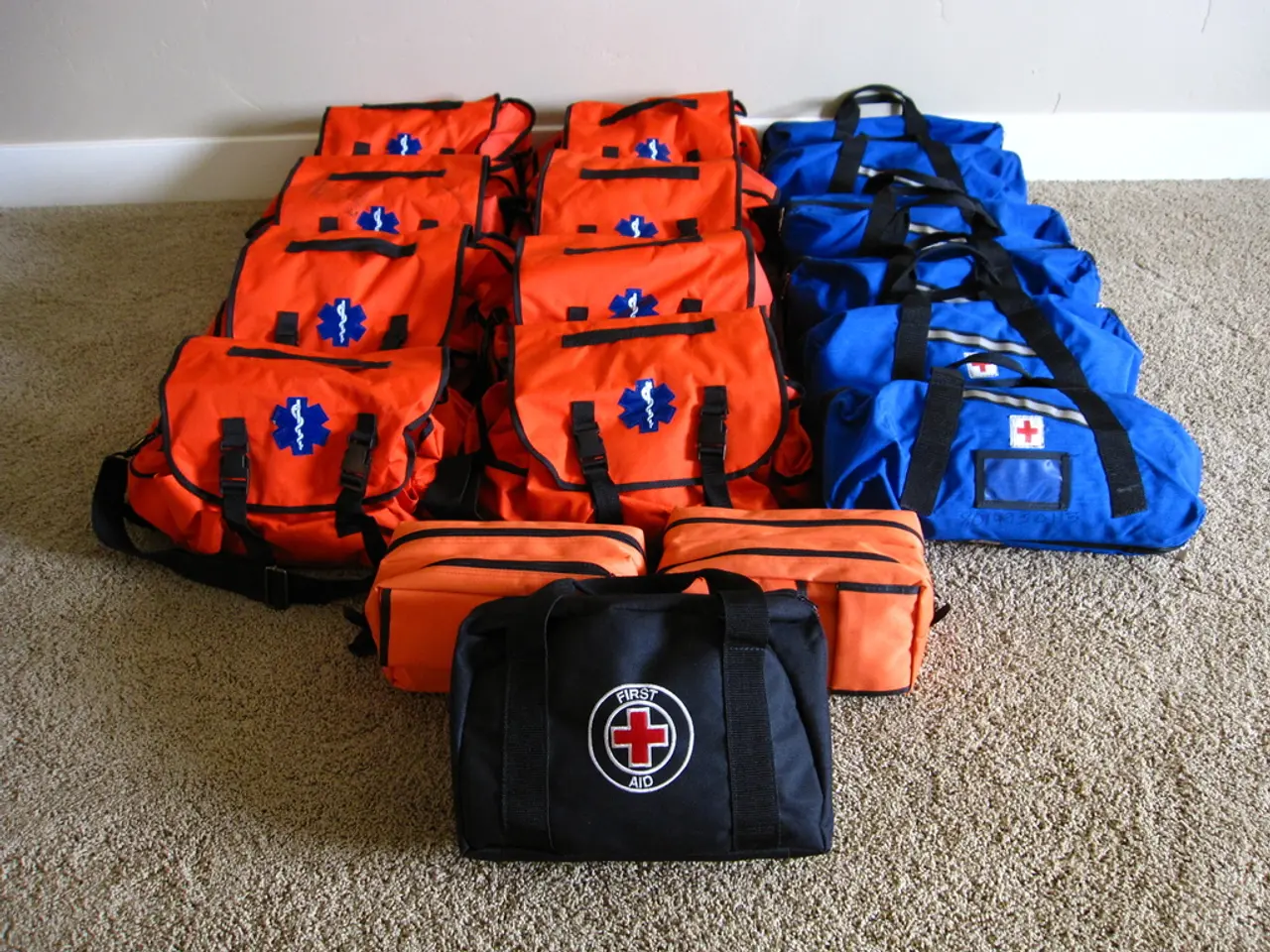Quick Actions During a Heart Attack:
In the event of a cardiovascular emergency, quick action can significantly improve treatment outcomes. Here's a guide on how to prepare and respond effectively to common heart emergencies.
First and foremost, it's essential to set up emergency contacts in your phone, health records management system, medical alert jewelry, and smartwatch. Additionally, having a HeartSafe Home Plan and Action Plan can ensure your home is ready to respond to emergencies.
During a cardiovascular emergency, seeking immediate medical attention is crucial. Avoid driving yourself to the hospital as ambulances are equipped with life-saving medical equipment and staffed by trained paramedics. Instead, unlock doors and turn on lights to help emergency responders find and access you quickly. Enable Smartphone GPS to help emergency services locate you quickly. Utilize smart home devices to set up emergency protocols with devices like voice commands to unlock doors, turn on lights, call 911, and alert emergency contacts.
Common cardiovascular emergencies include heart attack, cardiac arrest, atrial fibrillation, and heart failure, each presenting with distinct symptoms and requiring specific immediate actions.
**Heart Attack (Myocardial Infarction):** Symptoms typically include persistent chest pain or discomfort described as pressure or squeezing, which may radiate to the arms, neck, jaw, back, or stomach. Other signs include shortness of breath, sweating, nausea, dizziness, and anxiety. For a heart attack, call emergency services immediately. Emergency treatments include blood-thinning medications, coronary angioplasty to restore blood flow, or coronary artery bypass surgery if needed. Time is critical, so seeking urgent professional care is essential.
**Cardiac Arrest:** Occurs when the heart suddenly stops beating, leading to unresponsiveness, cessation of normal breathing, and color changes (blue or gray skin). It requires immediate action as survival chances drop drastically every second without intervention. Immediate CPR (cardiopulmonary resuscitation) is vital. Hands-only CPR—focused on firm, continuous chest compressions at a rate of 100 to 120 per minute and a depth of 1.5 to 2 inches—can double or triple survival chances before emergency help arrives. Use an automated external defibrillator (AED) if available.
**Atrial Fibrillation (AFib):** Characterized by a fluttering or quivering heartbeat, fatigue, irregular and rapid heartbeat, dizziness, shortness of breath, weakness, faintness, confusion, sweating, and sometimes chest pain. Recognition of symptoms and prompt medical evaluation is important. Management may include monitoring, medications to control heart rhythm and rate, and anticoagulants to reduce stroke risk. Chest pain or severe symptoms require emergency evaluation.
**Heart Failure:** Symptoms include shortness of breath at rest or during activity, fatigue, swelling in the legs or ankles, and heart palpitations. Seek medical attention if experiencing worsening symptoms such as increased shortness of breath, fatigue, or swelling. Treatment often involves lifestyle changes, medications, and in severe cases, hospital care.
In addition to being prepared for emergencies, maintaining a healthy lifestyle can help manage cardiovascular risk factors. Regularly monitor your health with your healthcare team, keep medications organized and in a consistent place, wear medical alert jewelry to provide critical information to responders, and avoid physical exertion, keep breathing calmly, and loosen tight clothing to aid in comfort and breathing during a heart emergency.
Don't take over-the-counter medications during a heart emergency as some medications can worsen heart conditions or interact negatively with prescribed treatments. Update medical records to ensure they are up-to-date and accessible. Install medical alert apps to notify emergency contacts that you need help and provide your location. Prepare an emergency kit that includes essential items like aspirin, nitroglycerin (if prescribed), and a full, up-to-date list of your medications and medical conditions.
Being aware of these symptoms and acting rapidly—particularly calling emergency services and performing CPR when needed—can significantly improve outcomes in cardiovascular emergencies.
In the realm of health-and-wellness, understanding medical-conditions such as heart attack, cardiac arrest, atrial fibrillation, and heart failure, each with distinct symptoms, is crucial for ensuring cardiovascular health. To prepare for emergencies, set up emergency contacts, establish a HeartSafe Home Plan, and utilize smart devices to make it easier for emergency responders to find you. Along with being prepared, maintaining a healthy lifestyle through regular monitoring of health, organizing medications, wearing medical alert jewelry, and avoiding strenuous activity can help manage cardiovascular risk factors.




